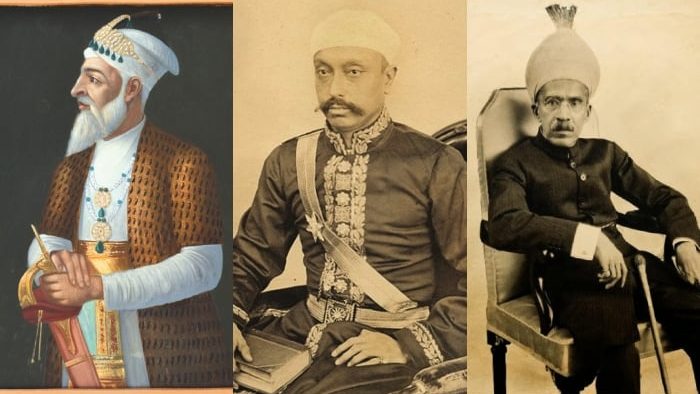How wealthy were the Hyderabadi monarchs of India whose paperweights were diamonds?

The Nizam, or hereditary rulers, of Hyderabad, India, ruled for two centuries and were well-known for their luxury, wealth, and forward-thinking development.
In India’s past, their ostentatious wealth, magnificent palaces, and pricey belongings are legend.
These are a few of the wealthiest Nizam dynasty (sometimes called Asaf Jahi dynasty) kings of Hyderabad.
Asaf Jah
Asaf Jah, also known as Siddiqi Bayafandi, was the first Nizam of Hyderabad, having been born in 1802, and served as a commander in the Mughal Empire under Mir Qamar-ud-din Khan.
When the Nizam established autonomous rule over the Deccan region in 1724, the Asaf Jahi dynasty was established. The Asaf Jahi Nizams were the names of the succeeding kings.
The renowned Golconda mines near Hyderabad, which provided diamonds to the global market, were their primary source of wealth.
Salar Jung I
Hyderabad State was led by Indian aristocrat Sir Mir Turab Ali Khan, also referred to as Salar Jung I, as prime minister from 1853 till 1883.
He had instituted a number of administrative reforms, such as the construction of contemporary educational facilities, the development of rail and telegraph networks, and the reorganization of the legal and revenue systems.
His unique sculptures and artwork, which are kept in the Salar Jung Museum, were acquired after traveling through France and Rome.
Mir Osman Ali Khan Bahadur Asaf Jah VII
Two percent of the US GDP was attributed to the fortunes of Osman Ali Khan, who became the 25-year-old king of Hyderabad in 1911.
Along with his earnings from the Golconda mines, he also had a private airline, 400 million pounds worth of diamonds, 100 million pounds of gold, and his own currency.
In addition, he sent Queen Elizabeth II a 300-diamond necklace and used a million-dollar diamond as a paperweight.
It is estimated that his wealth in the 1940s was more than INR17 billion, or more than two trillion Indian Rupees in 2023.
Azmet Jah
Mir Muhammad Azmat Ali Khan, the son of Prince Mukarram Jah, the ninth and last official Nizam of Hyderabad, succeeds his father.
The Indian government eliminated titles in 1971, hence Azmet Jah is not the Nizam IX, according to Financial Express.
But he had also taken on a lot of other responsibilities, including taking over Nizam Trusts at his father’s request.
He inherited several palaces, including the renowned Falaknuma Palace in Hyderabad as well as a 12 kg gold mohur, which was the biggest gold coin ever made.
The government had given his father a pathetic $22 million in 2002 for the jewel, according to The Wire.

I am a dedicated student currently in my seventh semester, pursuing a degree in International Relations. Alongside my academic pursuits, I am actively engaged in the professional field as a content writer at the Rangeinn website.








